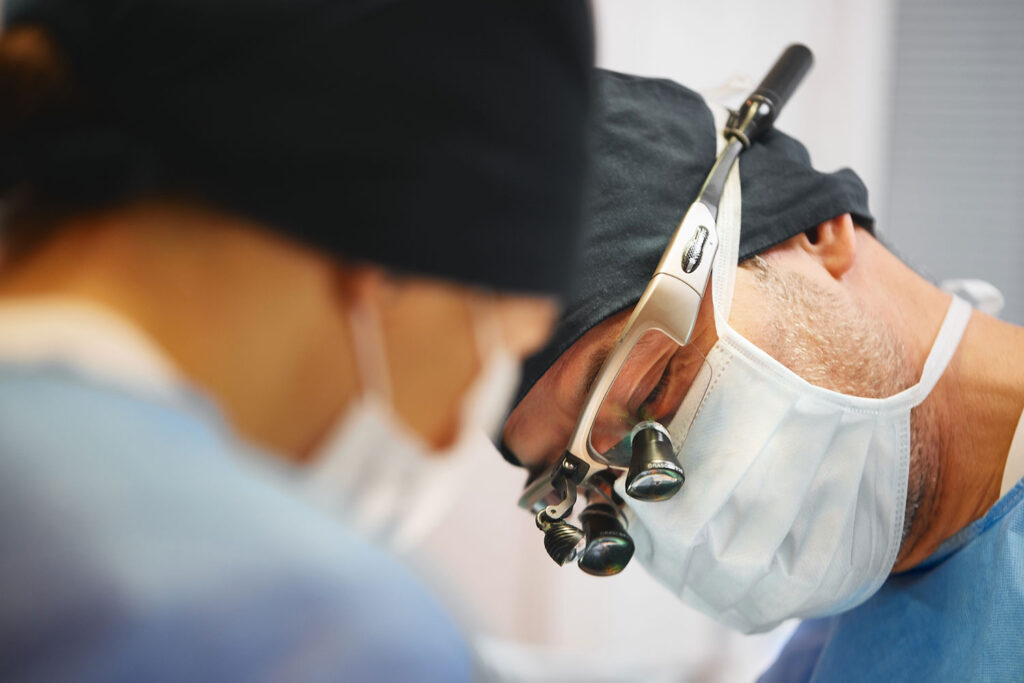Gum treatment
In case of periodontal disease (bacterial infection localized around the teeth), it is necessary to clean up the gums.
A dental flap can be used to reach the area to be treated. Depending on the defect, we can regenerate the periodontium.
After surgical treatment, regular long-term maintenance is essential.

Mucogingival surgery
For an implant to osseointegrate, it must be surrounded by a good amount of healthy bone. In order to obtain long-term survival, the implant has to be surrounded by a thick layer of healthy soft tissue (gum).
When there is a defect at the gingival level such as recessions or a lack of gum next to an implant, soft tissue augmentation can be carried out using grafting or gingival displacement techniques.

Prophylaxis
Periodontal diseases have to be treated before implant treatment.
In case of an advanced stage, removing remaining teeth and modifying the oral flora to suppress any infection might be necessary.
The major benefits of implants are solid support for your new teeth, restoring chewing functions and an optimal esthetics.
Excellent oral hygiene with specially designed brushes, such as interdental brushes, can help clean plaque around teeth, gums and abutments, which is key to the success of dental implants.
We schedule regular dental exams to ensure the health of your implants.
Close collaboration between the patient and the dentist will contribute to the success of the implants.

Advice
After surgery, it is recommended to take medication and apply an ice pack to reduce swelling.
Painkillers should be taken before the anesthesia has completely worn off.
Generally speaking, the discomfort is perfectly controlled.
After every meal, your teeth should be cleaned.
Postoperative instructions and appointments must be respected.
After implant placement, an annual visit to the dentist is recommended to check the gums and occlusion (contact between the teeth).


